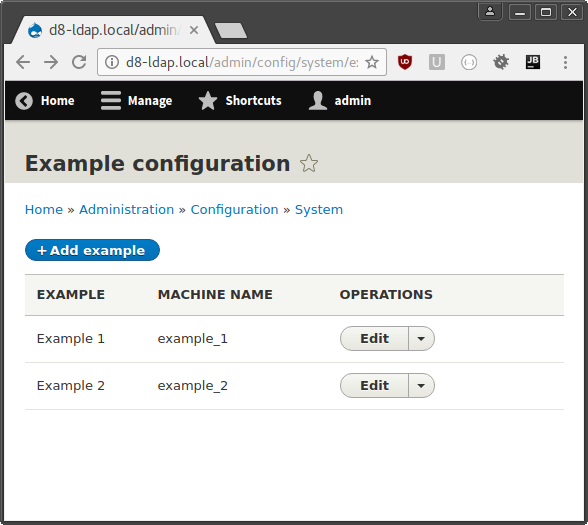
Drupal 8 includes several types of information:
- Content
Information intended for display on your site and editable by users: articles, basic pages, images, files, etc.
- Session
Information about individual user interactions with the site, such as their current filter selection in views. This is ephemeral and personalized to one user.


By default, configuration information in Drupal 8 is stored in the database.
Configuration File Format (YAML)
Extensions (modules, themes, and profiles) provide configuration data in YAML files.
Here's an example of a configuration file:
some_string: 'Woo kittens!' some_int: 42 some_bool: true
Configuration can also be nested. Here's an example:


Drupal 8's configuration system handles configuration in a unified way. By default, Drupal stores configuration data in the database, but it can be exported to YAML files for version control. However, there are scenarios where configuration values need to be overridden for specific purposes. In Drupal 7, this was done using the global $conf variable, often populated in settings.php for conditional overrides. A major drawback of that system was that overrides would be saved into the actual configuration storage.


Drupal 8 includes support for a configuration schema/metadata language based on Kwalify (http://www.kuwata-lab.com/kwalify/) for YAML configuration files. Kwalify itself is written in Ruby and required some modifications for our purposes, so not all Kwalify details apply directly, but it's quite close.
Cheatsheet
For a quick understanding and some helpful examples, refer to this cheat sheet, and continue reading if you still have questions:


Configuration objects can declare dependencies. A dependency can be a module, theme, or entity.
A configuration object’s dependencies must be present before the configuration object can be installed. If the required dependencies are missing on the site, the configuration object will fail to install. A module must declare in its module info YAML file any module or theme dependencies required by its configuration objects.


This page provides an example of how to create a configuration entity type with administrative management pages in Drupal 8. For an introduction to the concepts of simple configuration and configuration entities, see https://drupal.org/node/2120523.
After enabling the example module that contains the code below, the configuration form should be available at “admin/config/system/example”, as shown in the screenshot:



Using $config in the Context of a Form
This page describes the API for retrieving and setting configuration data for simple configuration. (This does not apply to information stored in configuration objects.)


Using $config in the Context of a Form
You can use configuration forms to see how $config can retrieve user-entered data and update information in the {module}.settings.yml file. Here's the code to declare a $config object within a form, typically found in a PHP settings form file.


The Drupal 8 Database API provides a standardized, vendor-independent abstraction layer for accessing database servers. You should almost never make direct database calls unless you are developing core APIs.
The API is designed to preserve the syntax and power of SQL as much as possible, while also:
